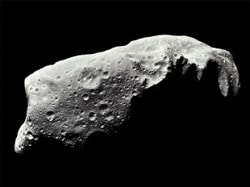A strike from a big asteroid more than 300 million years ago left a huge impact zone buried in Australia and changed the face of the earth, researchers said on Friday.

The asteroid was bigger than 10 km (6 miles) in diameter, while the impact zone itself was larger than 200 km (120 miles) – the third largest impact zone in the world.
“The greenhouse gases would stay in the atmosphere for tens of thousands of years,” Glikson said.
The discovery was made after another researcher alerted Glikson to some unusual mineral deposits in the East Warburton Basin in South Australia.
Glikson and colleagues analyzed quartz grains drawn from deep beneath the earth’s surface in research starting in 2010 and the crater itself was recently identified, he added.
The strike may have been part of an asteroid impact cluster which caused an era of mass extinction, wiping out primitive coral reefs and other species, added Glikson, co-author of a study published in the journal Tectonophysics.
The impact happened before the dinosaurs, he said.
The announcement of the discovery came just before a newly discovered asteroid about half the size of a football field was set to pass some 27,520 km (17,200 miles) from Earth.

